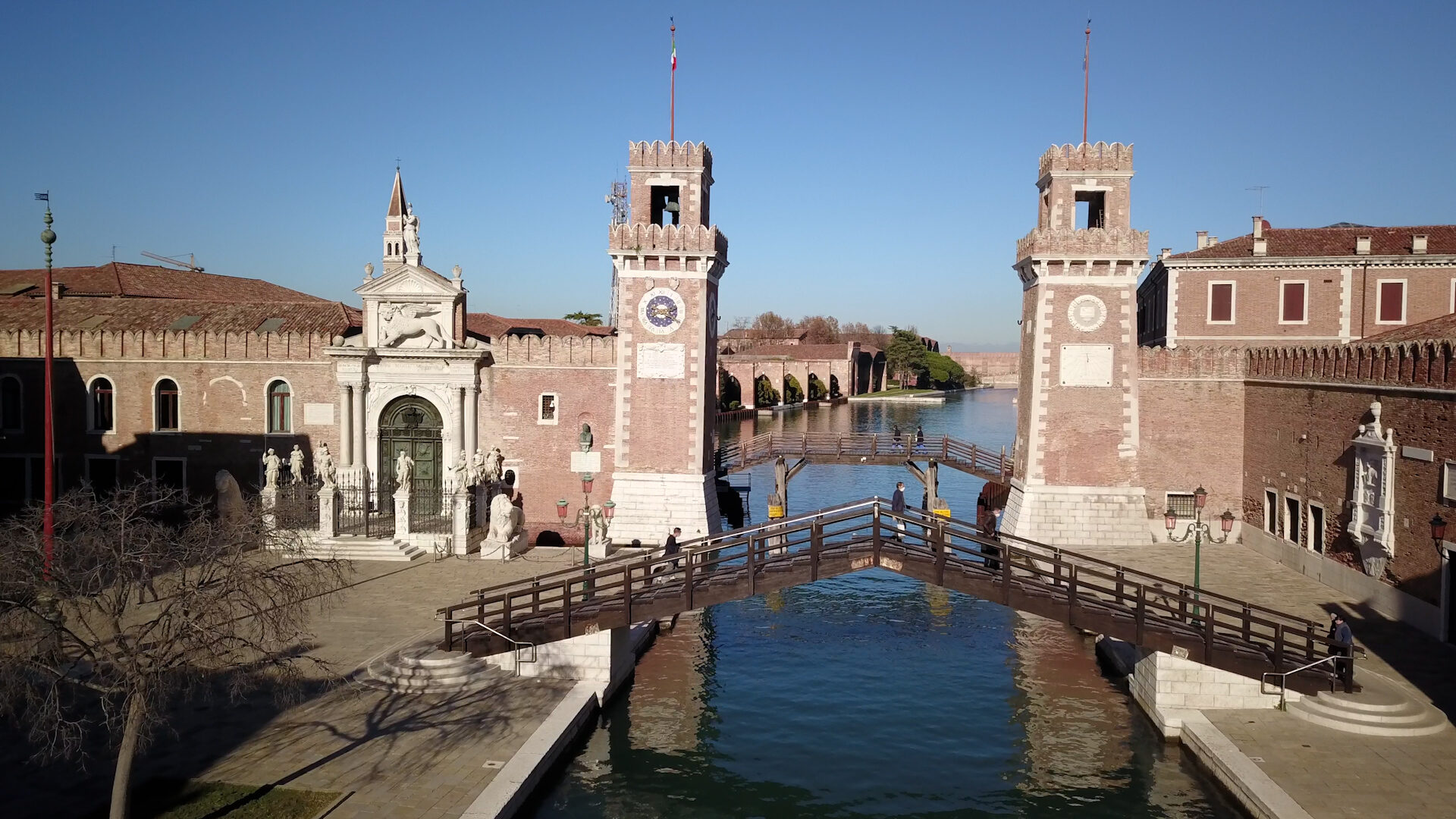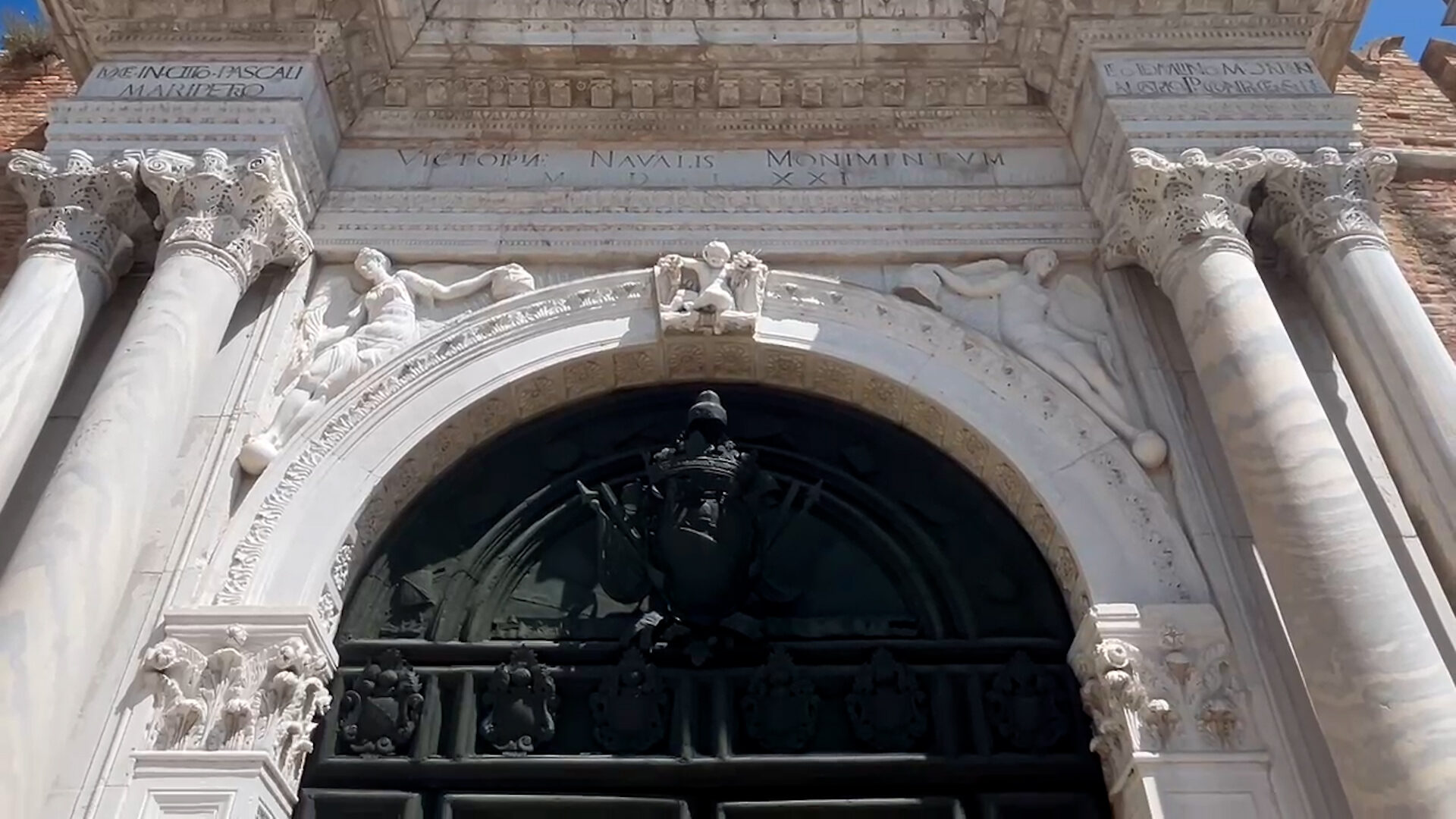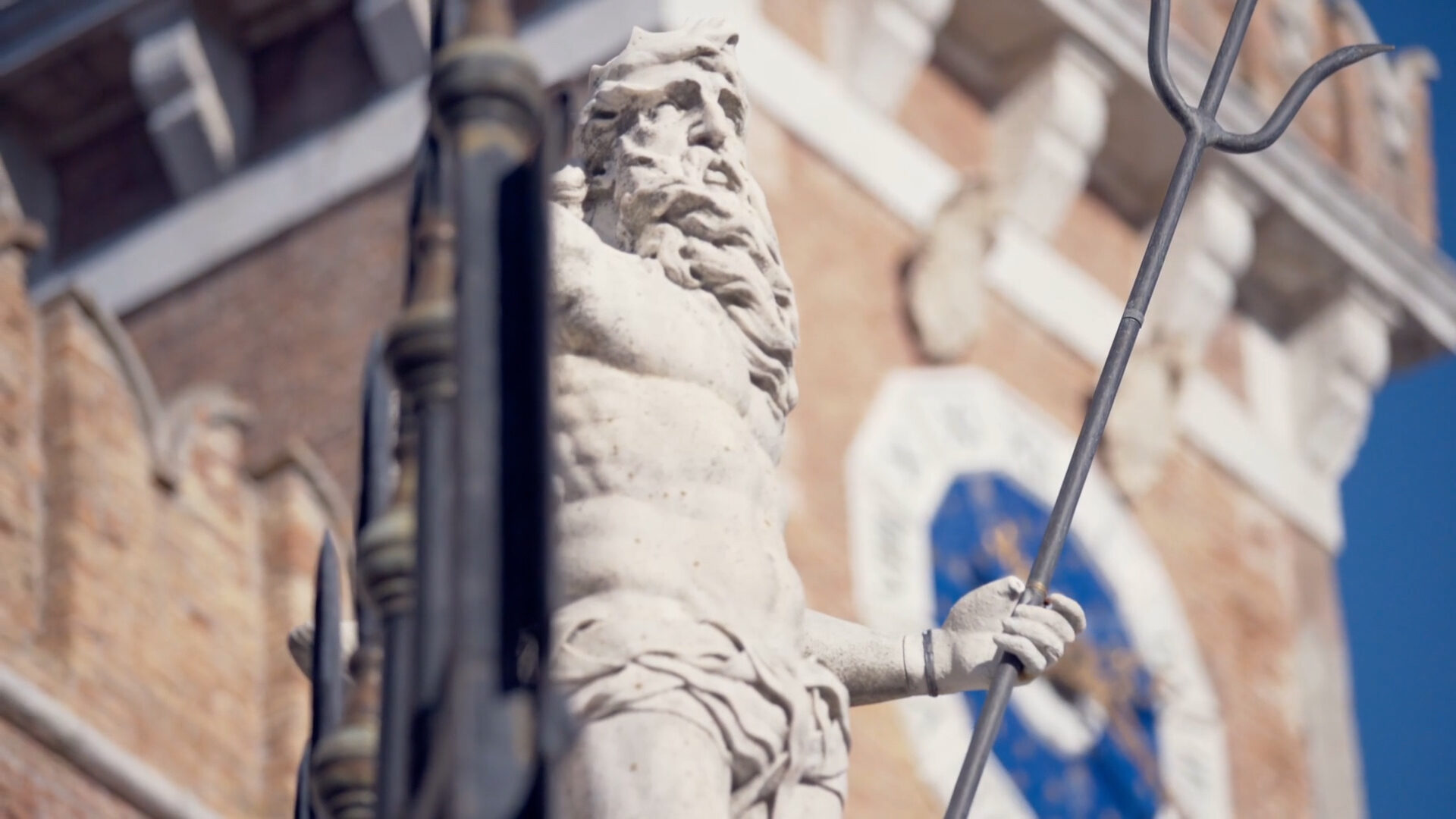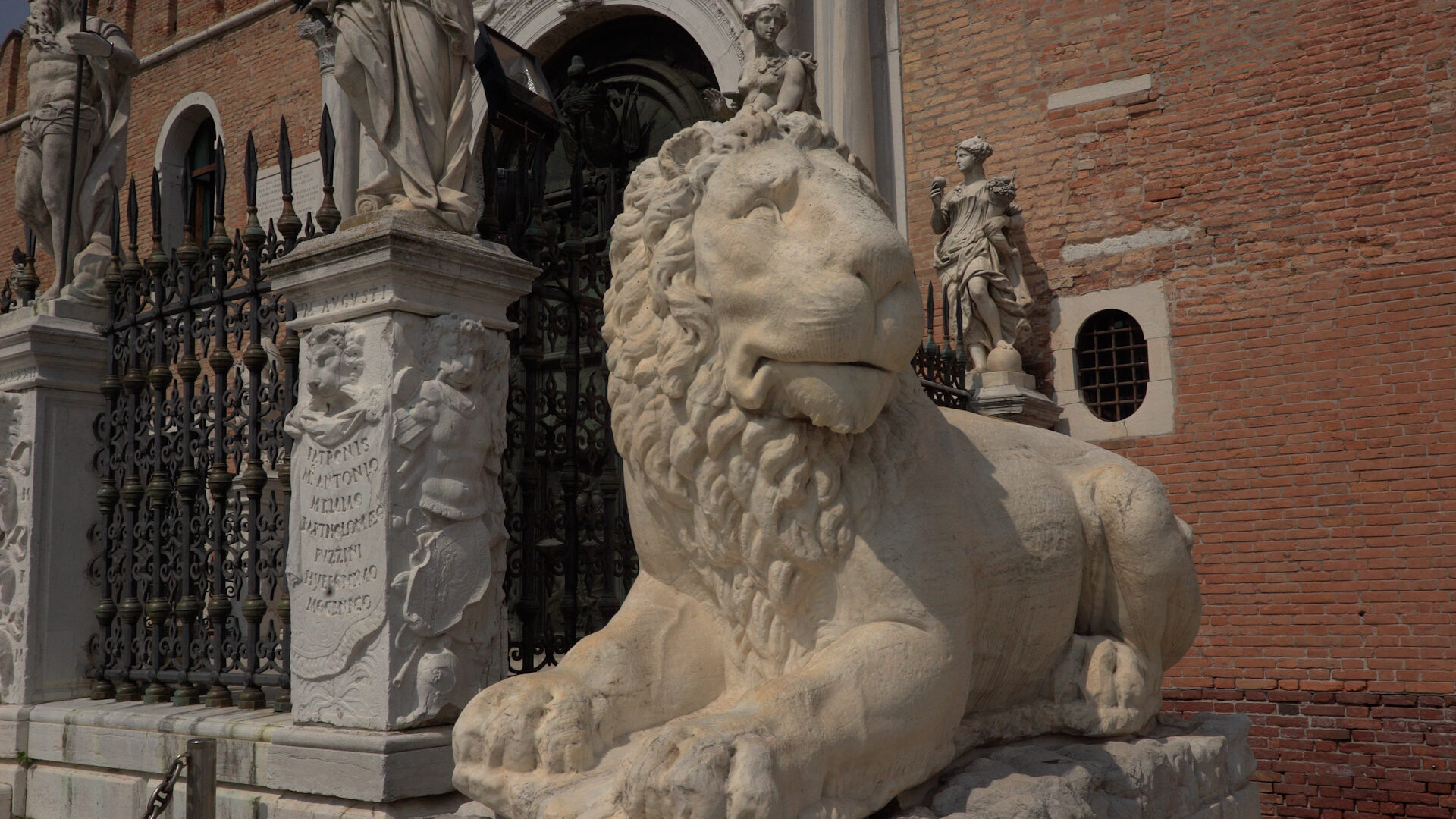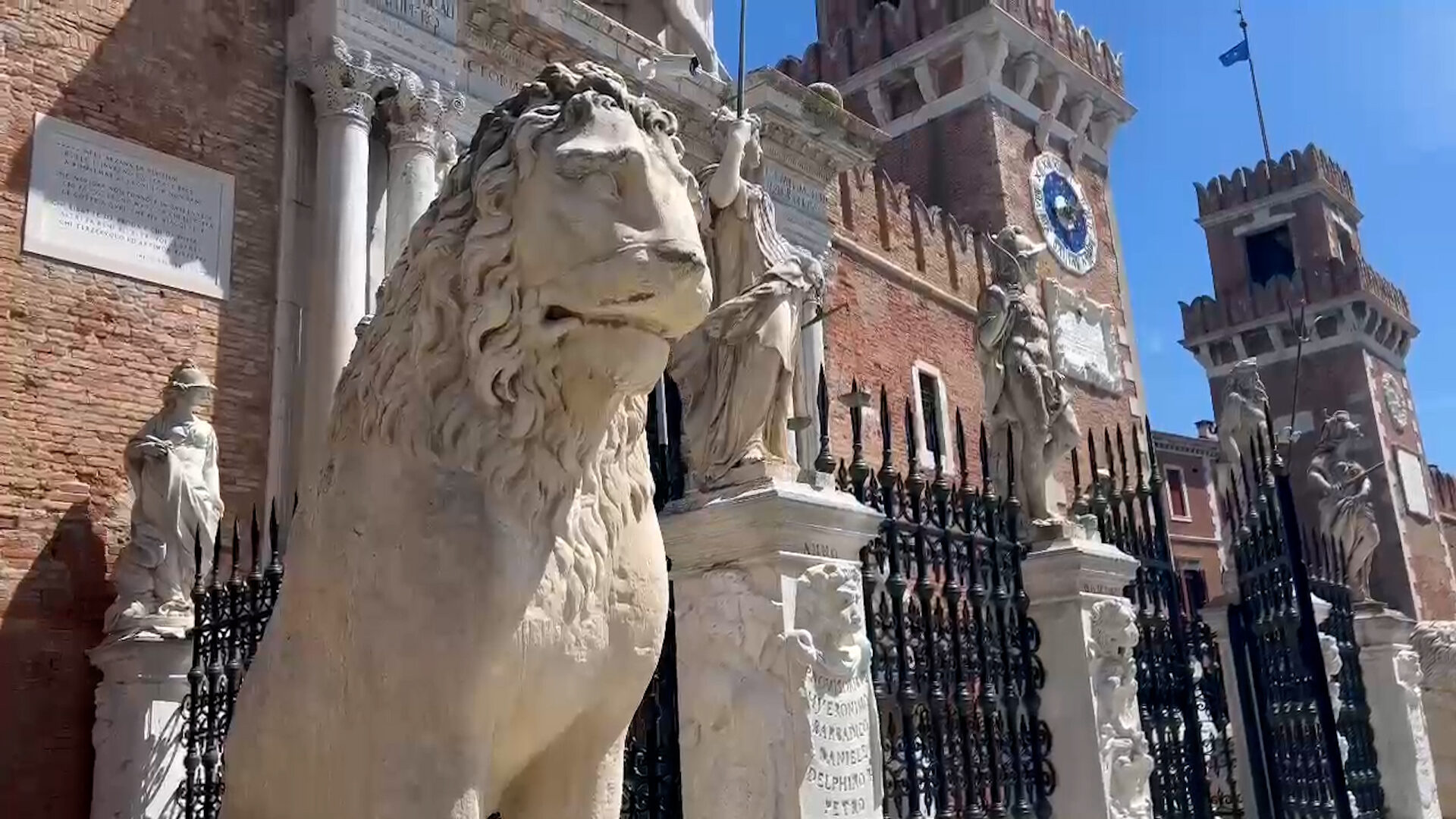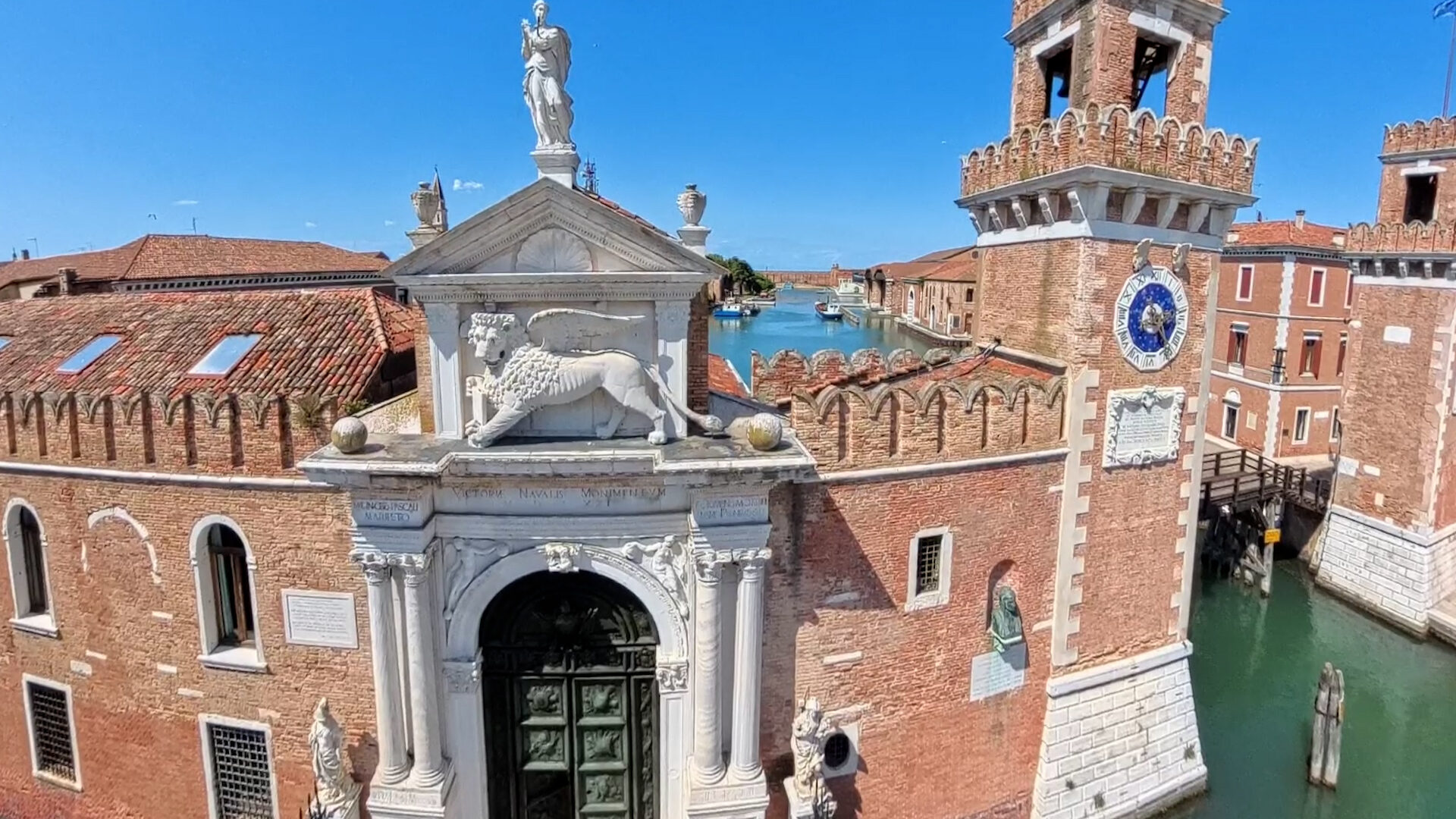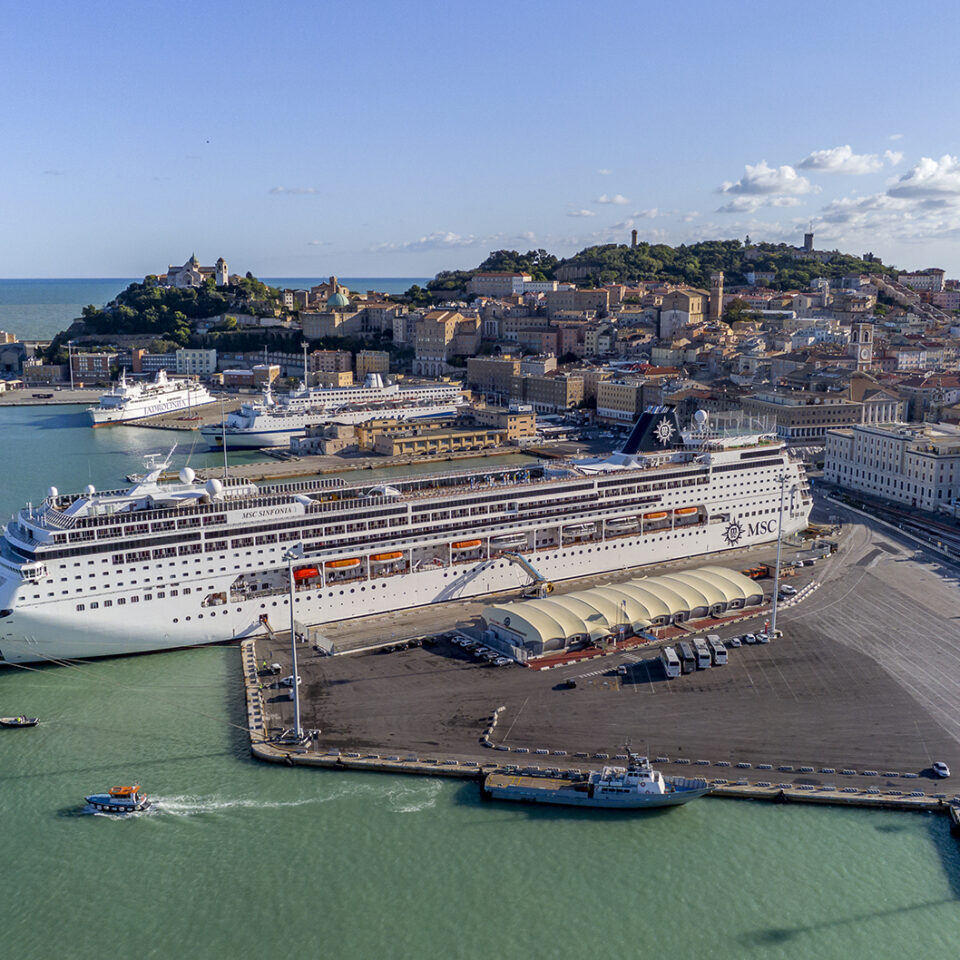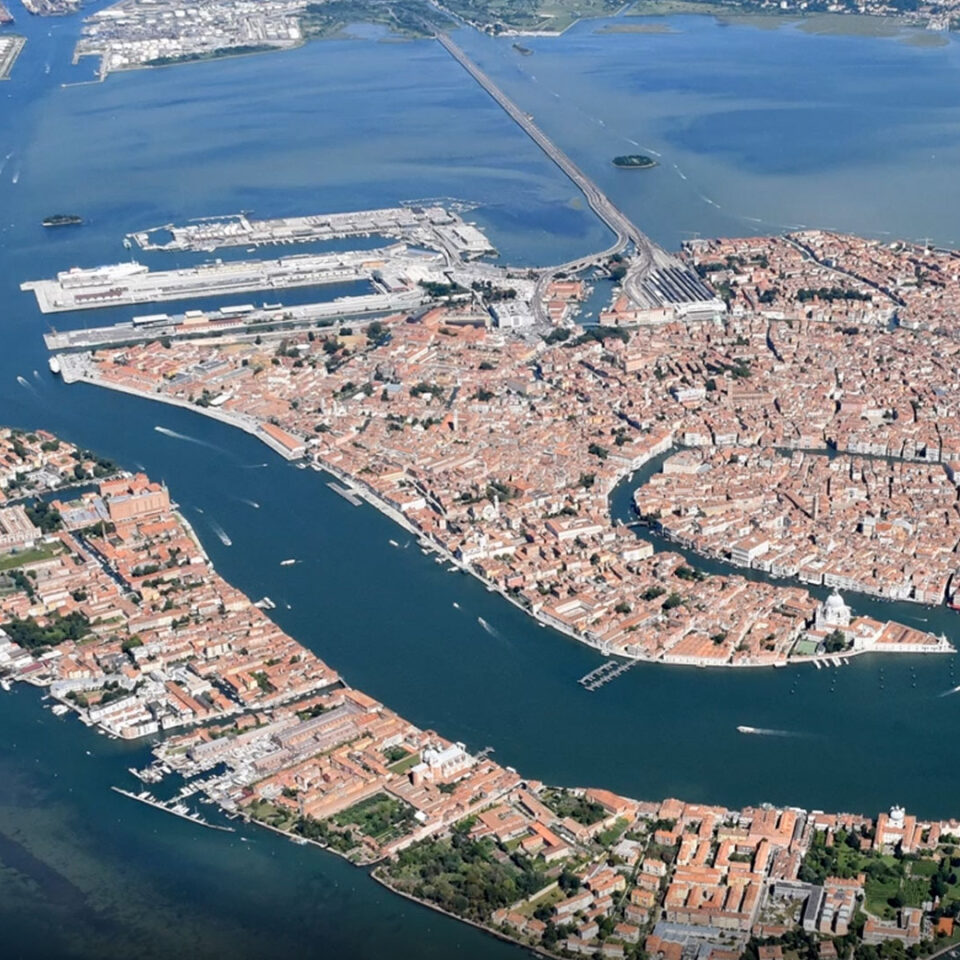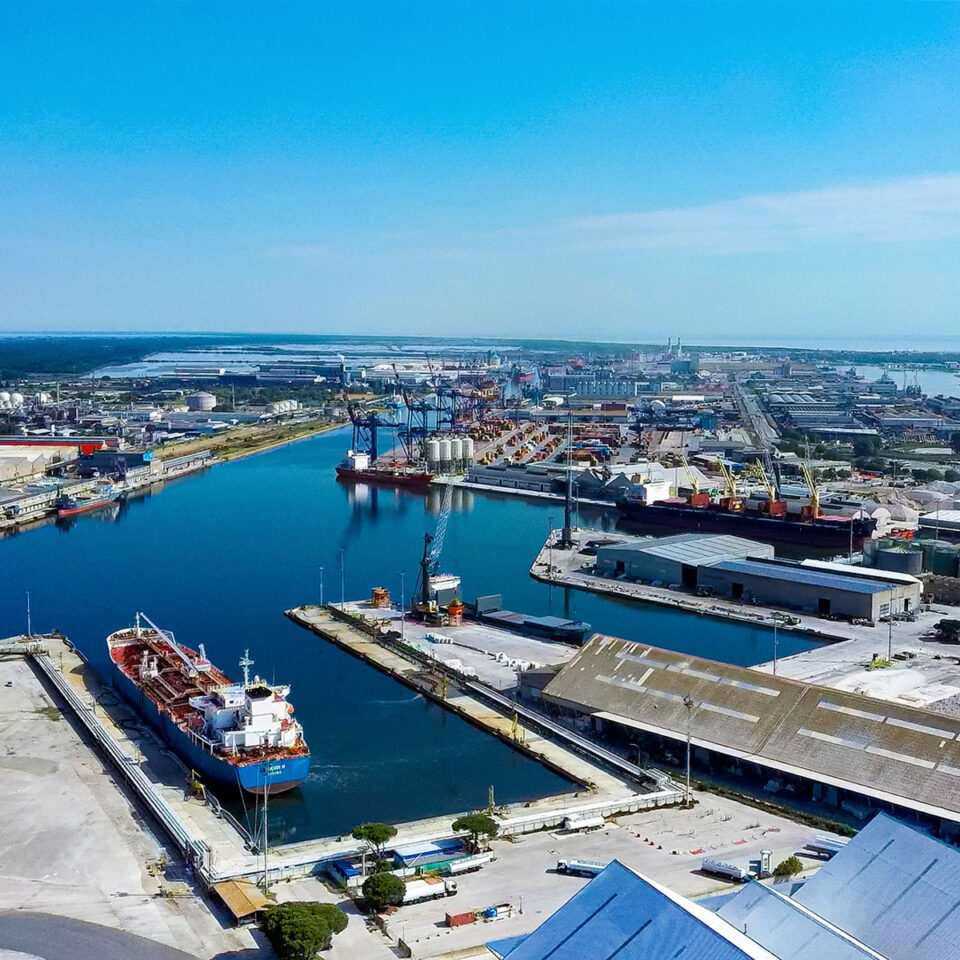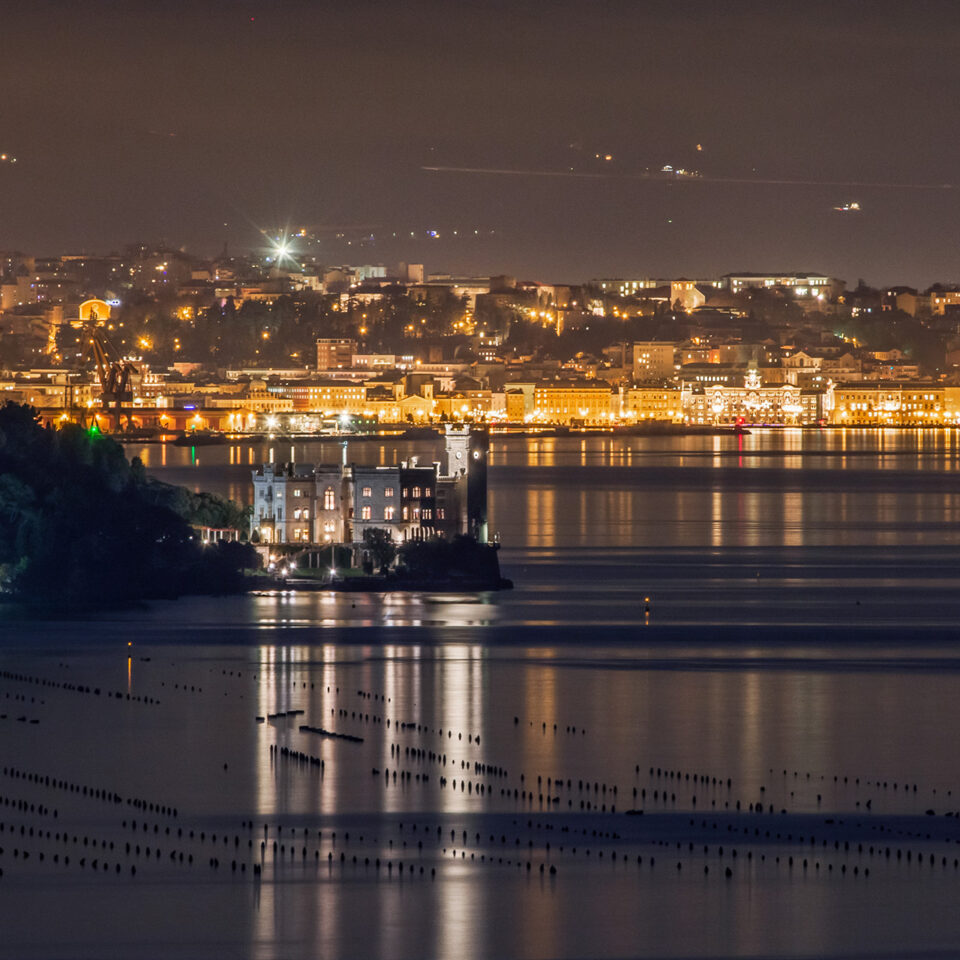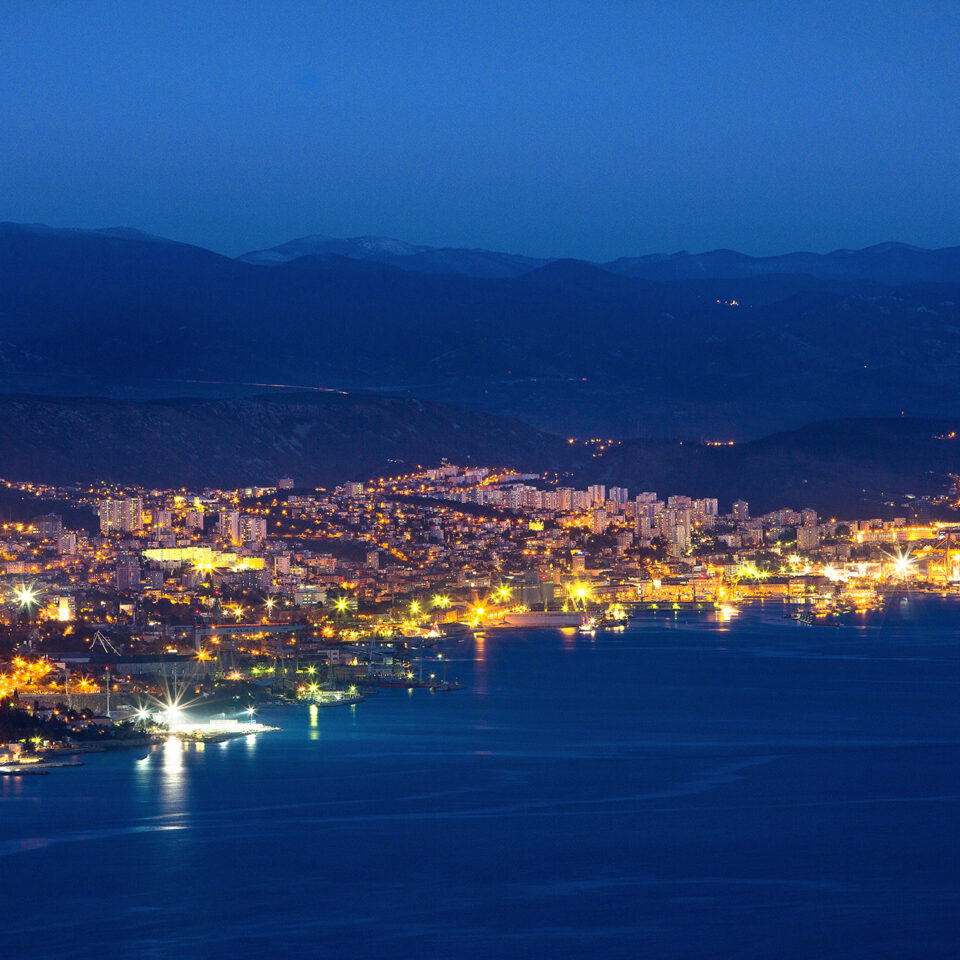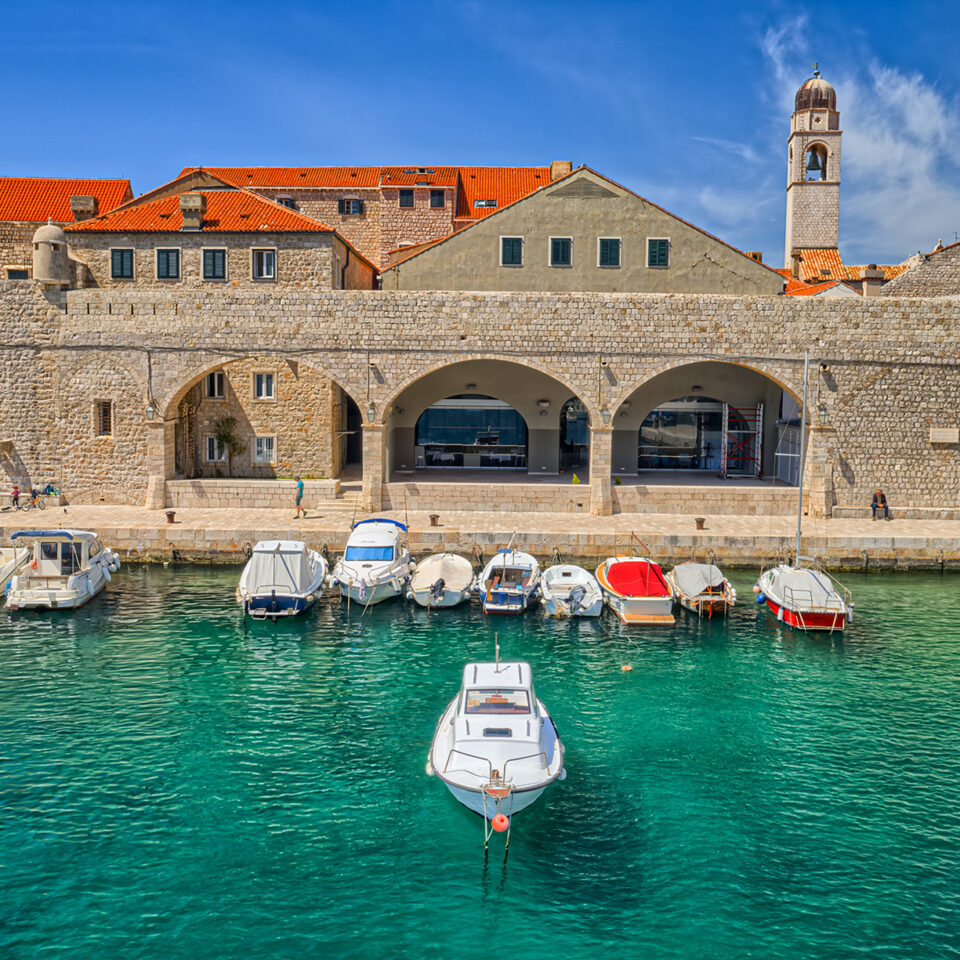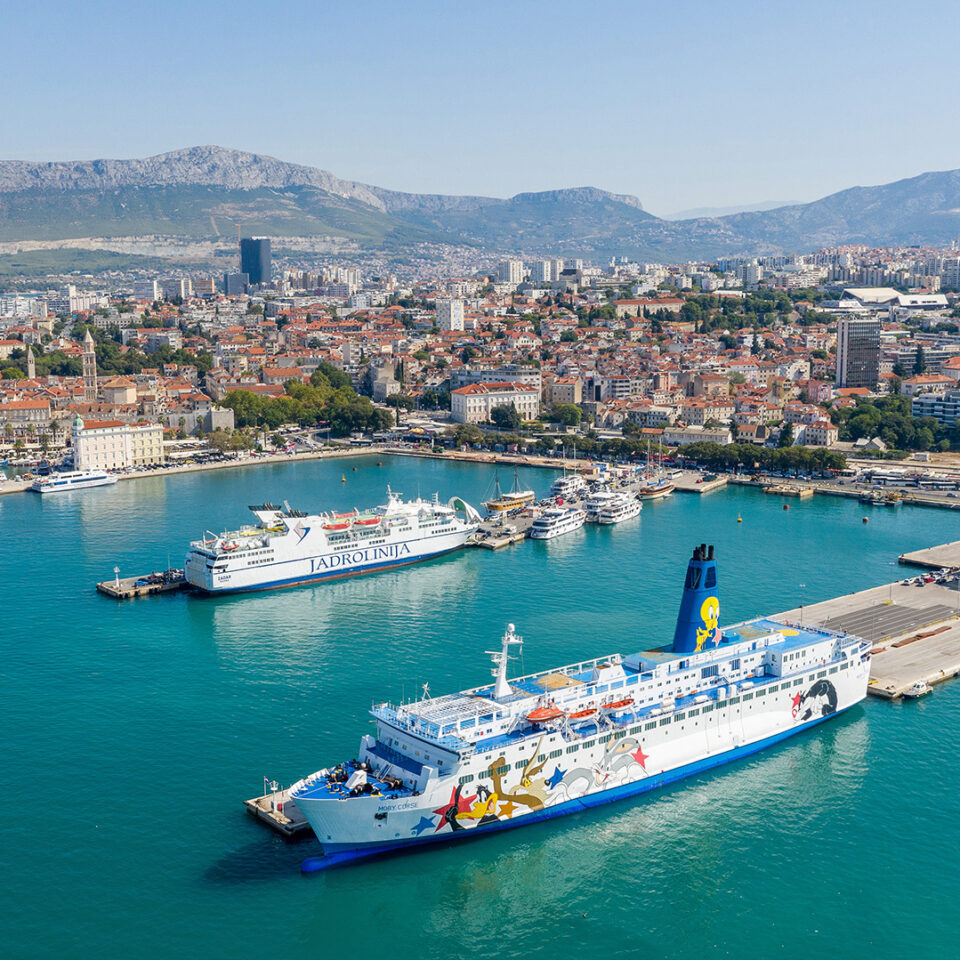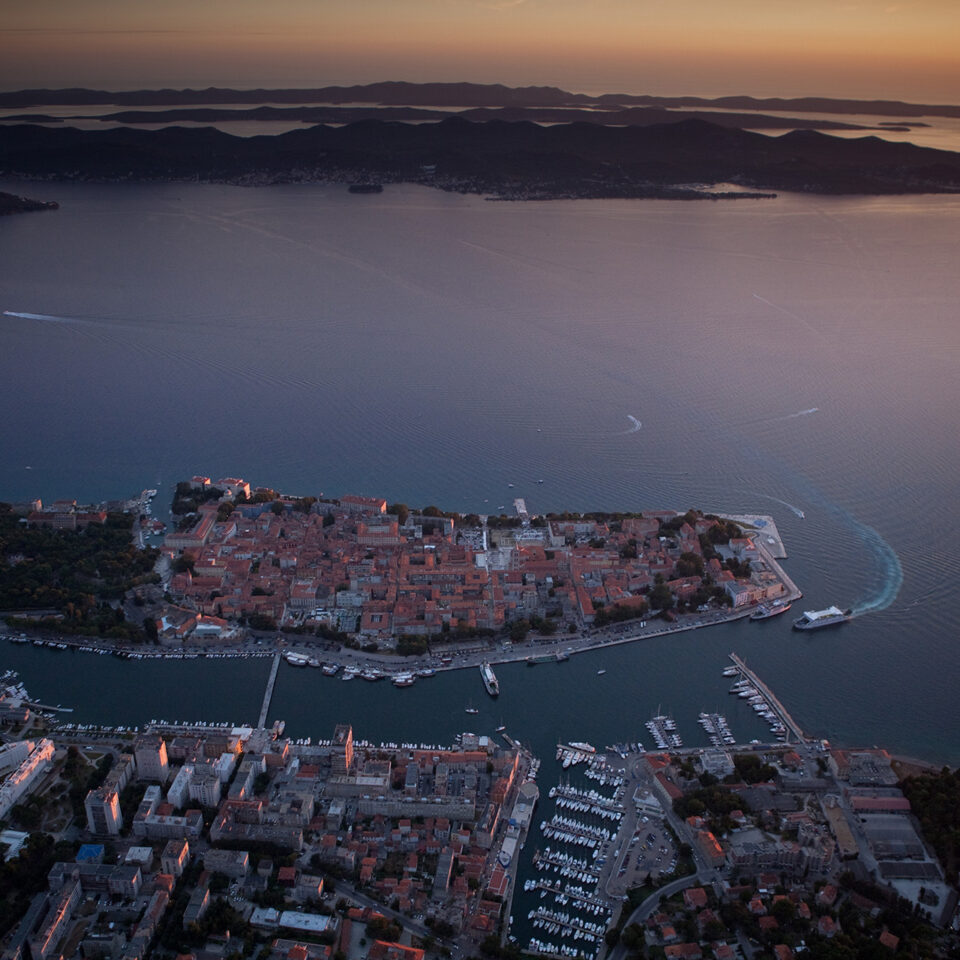


The Monumental Gate of the Arsenale
The Porta da Terra, or Land Gate, of the Venetian Arsenal is one of the most iconic architectural landmarks of Venice, and the very first example of Renaissance architecture in the city.
Between 1457 and 1460, under the direction of Antonio Gambello, the old medieval entrance was radically transformed. Inspired by the grandeur of Roman triumphal arches, Gambello gave the gate its current monumental appearance, combining classical harmony with echoes of Byzantium. The columns, for instance, rest on capitals dating back to the 12th century, carved with elegant acanthus leaves.
Above the gate, a majestic walking Lion of Saint Mark, symbol of the Republic of Venice, was sculpted by Bartolomeo Bon and placed in the attic, completing the first phase of reconstruction. A few decades later, in 1523, a sober yet imposing atrium was added, echoing the military architecture of Venice’s mainland territories. Inside, a Madonna and Child by Jacopo Sansovino, sculpted in 1533, adds a sacred touch to the entrance hall. A marble staircase nearby once led to the offices of the Magistrato all’Arsenale, the Arsenal’s ruling authority.
In 1571, following the Venetian, led victory over the Ottoman fleet at Lepanto, the gate was further enriched. Two winged Victories and a bold inscription, Victoriae Navalis Monumentum, were added to celebrate the Republic’s naval triumph. By 1578, the statue of Saint Justina, patron of the battle, and two massive marble urns had joined the ensemble.
In 1692, the small bridge in front of the gate was transformed into a terrace, lavishly adorned with baroque statues and military trophies in honor of Doge Francesco Morosini and his campaigns in the Morea. On either side of the terrace stand two monumental lions, spoils of war from Venetian expeditions in the Eastern Mediterranean. One of them, taken from the port of Piraeus, is particularly intriguing: it’s covered in mysterious runic inscriptions, believed to have been carved by Viking mercenaries once in service of the Byzantine Empire, an extraordinary witness to ancient encounters between distant cultures.
The last significant addition was made in 1694, when the wooden doors of the gate were covered in repoussé copper, richly decorated with coats of arms and weapons, a tribute to the Arsenal’s heroes and its central role in the maritime might of Venice.
Two more lions would be added later: one from the sacred island of Delos in 1716, and a final, composite lion of uncertain origin, silent guardians of a gateway that, for centuries, protected the beating heart of Venice’s maritime power.

